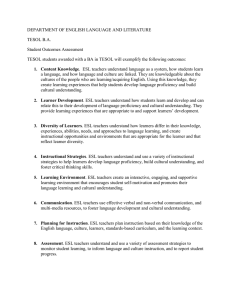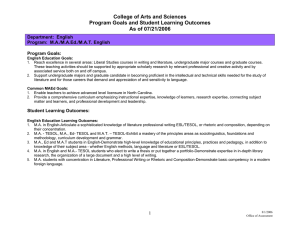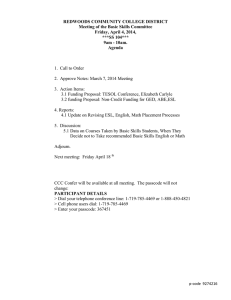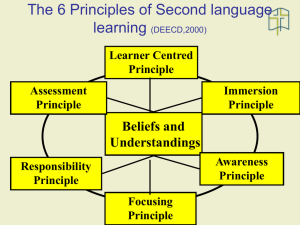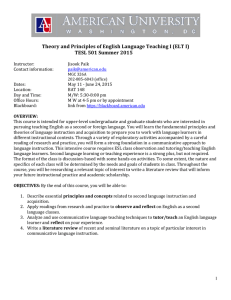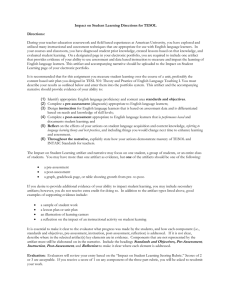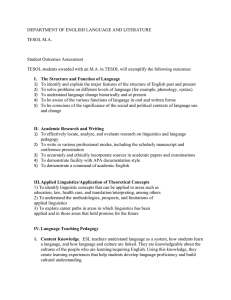DEPARTMENT OF ENGLISH LANGUAGE AND LITERATURE TESOL M.A. Student Outcomes Assessment
advertisement
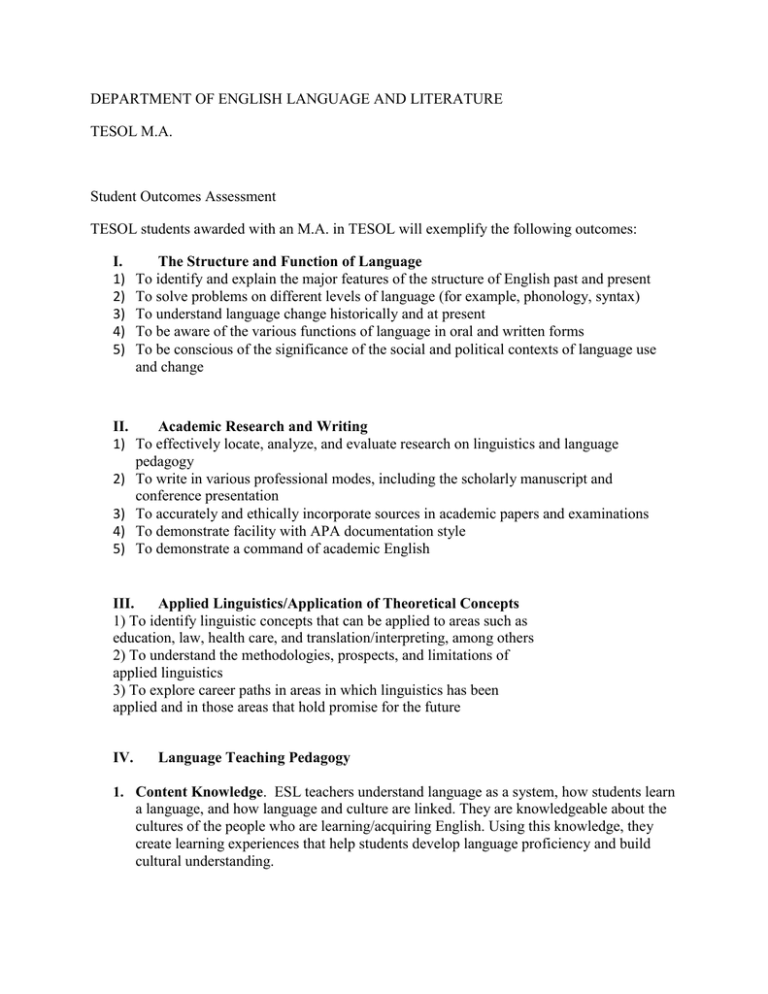
DEPARTMENT OF ENGLISH LANGUAGE AND LITERATURE TESOL M.A. Student Outcomes Assessment TESOL students awarded with an M.A. in TESOL will exemplify the following outcomes: I. 1) 2) 3) 4) 5) The Structure and Function of Language To identify and explain the major features of the structure of English past and present To solve problems on different levels of language (for example, phonology, syntax) To understand language change historically and at present To be aware of the various functions of language in oral and written forms To be conscious of the significance of the social and political contexts of language use and change II. Academic Research and Writing 1) To effectively locate, analyze, and evaluate research on linguistics and language pedagogy 2) To write in various professional modes, including the scholarly manuscript and conference presentation 3) To accurately and ethically incorporate sources in academic papers and examinations 4) To demonstrate facility with APA documentation style 5) To demonstrate a command of academic English III. Applied Linguistics/Application of Theoretical Concepts 1) To identify linguistic concepts that can be applied to areas such as education, law, health care, and translation/interpreting, among others 2) To understand the methodologies, prospects, and limitations of applied linguistics 3) To explore career paths in areas in which linguistics has been applied and in those areas that hold promise for the future IV. Language Teaching Pedagogy 1. Content Knowledge. ESL teachers understand language as a system, how students learn a language, and how language and culture are linked. They are knowledgeable about the cultures of the people who are learning/acquiring English. Using this knowledge, they create learning experiences that help students develop language proficiency and build cultural understanding. 2. Learner Development. ESL teachers understand how students learn and develop and can relate this to their development of language proficiency and cultural understanding. They provide learning experiences that are appropriate to and support learners’ development. 3. Diversity of Learners. ESL teachers understand how learners differ in their knowledge, experiences, abilities, needs, and approaches to language learning, and create instructional opportunities and environments that are appropriate for the learner and that reflect learner diversity. 4. Instructional Strategies. ESL teachers understand and use a variety of instructional strategies to help learners develop language proficiency, build cultural understanding, and foster critical thinking skills. 5. Learning Environment. ESL teachers create an interactive, engaging, and supportive learning environment that encourages student self-motivation and promotes their language learning and cultural understanding. 6. Communication. ESL teachers use effective verbal and non-verbal communication, and multi-media resources, to foster language development and cultural understanding. 7. Planning for Instruction. ESL teachers plan instruction based on their knowledge of the English language, culture, learners, standards-based curriculum, and the learning context. 8. Assessment. ESL teachers understand and use a variety of assessment strategies to monitor student learning, to inform language and culture instruction, and to report student progress.
